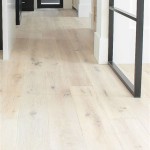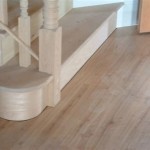How To Install Vinyl Stick On Plank Flooring
Vinyl stick-on plank flooring presents a cost-effective and relatively straightforward solution for updating the appearance of a room. Its ease of installation makes it a popular choice for DIY enthusiasts. However, proper preparation and adherence to specific techniques are crucial for achieving a professional-looking, long-lasting result. This article details the steps involved in installing vinyl stick-on plank flooring, ensuring a successful project.
Preparing the Subfloor
The foundation upon which the vinyl plank flooring is laid, known as the subfloor, is arguably the most vital factor in the success of the installation. A flawed or inadequately prepared subfloor can lead to a multitude of problems, including uneven surfaces, adhesive failure, gaps between planks, and premature wear and tear. The following steps outline the process of preparing the subfloor to receive the vinyl plank flooring.
Inspection: Begin with a comprehensive inspection of the existing subfloor. This includes checking for any signs of damage, such as cracks, holes, water stains, or loose areas. Pay particular attention to areas that may have been exposed to moisture, as these are often prone to mold or mildew growth. Also, assess the overall levelness of the subfloor. Significant dips or humps can create issues during installation and affect the final appearance of the floor.
Cleaning: Thoroughly clean the subfloor to remove any dirt, dust, debris, wax, grease, or paint. A shop vacuum is ideal for removing loose particles. Subsequently, scrub the floor with a mild detergent and water solution. Ensure the floor is completely dry before proceeding. Residual dirt or debris can interfere with the adhesive bond of the vinyl planks.
Repairing Imperfections: Address any imperfections identified during the inspection. Small cracks and holes can be filled with a suitable patching compound designed for flooring. For larger areas of damage, consider using a self-leveling compound to create a smooth, even surface. Allow the patching compound or self-leveling compound to dry completely according to the manufacturer's instructions.
Leveling: Leveling the subfloor is essential, especially when noticeable variations in height exist. A self-leveling compound is typically used for this purpose. Follow the manufacturer's instructions meticulously, as the mixing and application process can significantly impact the final result. Ensure the compound spreads evenly and reaches all areas that require leveling. Allow sufficient drying time before proceeding.
Priming (If Necessary): Depending on the type of subfloor and the manufacturer's recommendations, a primer may be necessary. Applying a primer can improve adhesion and prevent moisture from migrating through the subfloor. Choose a primer specifically designed for use with vinyl flooring adhesive. Apply it evenly with a roller or brush, ensuring complete coverage. Allow the primer to dry completely before proceeding.
Acclimation: Although vinyl stick-on planks are less susceptible to expansion and contraction than traditional wood flooring, allowing them to acclimate to the room's temperature and humidity is still beneficial. Store the unopened boxes of planks in the room where they will be installed for at least 24 to 48 hours prior to installation. This allows the planks to adjust to the environment, minimizing potential issues related to dimensional changes after installation.
Planning the Layout and Cutting the Planks
Careful planning and precise cutting are essential for a visually appealing and structurally sound vinyl plank floor. A well-planned layout can minimize waste, create a balanced appearance, and ensure that seams are strategically placed. Accurate cutting is crucial for achieving tight seams and a professional finish.
Determining the Layout: Begin by measuring the room's length and width. This information will help determine the optimal layout of the planks. Consider the direction of the planks. Running them parallel to the longest wall can visually elongate the room. If the room is square, consider the direction of the incoming light. Laying the planks parallel to the light source can minimize the appearance of seams. Also, factor in the placement of doors and other architectural features.
Calculating Plank Requirements: Calculate the number of planks needed to cover the entire floor area. Add an additional 5% to 10% to account for waste due to cuts and miscalculations. This will prevent running short of materials during the installation process.
Dry Fitting: Before applying any adhesive, perform a dry fit of the planks across the room. This allows for visualizing the layout and identifying any potential issues, such as the need to adjust the plank direction or trim planks to fit around obstacles. Start by laying a row of planks along the longest wall, maintaining a consistent gap between the planks and the wall. This gap will serve as an expansion joint. Continue laying rows of planks, staggering the seams to create a more visually appealing pattern. The goal is to avoid having seams line up in adjacent rows.
Marking and Cutting: Once the layout is finalized, begin marking the planks for cutting. Use a utility knife and a straight edge to score the planks along the cutting line. For straight cuts, score the plank several times until it snaps cleanly. For more intricate cuts, such as those required around door frames or pipes, use a jigsaw or a coping saw. Always wear safety glasses when cutting vinyl planks.
Cutting Techniques: Different tools and techniques are suitable for different types of cuts. A utility knife is ideal for straight cuts, while a jigsaw or coping saw is better suited for curved or irregular cuts. When cutting around door frames, use a jamb saw to trim the bottom of the door frame, allowing the plank to slide underneath. For pipes, use a hole saw to create a perfectly sized opening in the plank.
Maintaining Expansion Joints: Remember to maintain a consistent expansion joint around the perimeter of the room. This gap allows the flooring to expand and contract with changes in temperature and humidity, preventing buckling or warping. The recommended size for the expansion joint is typically 1/4 inch to 3/8 inch. Spacers can be used to maintain a consistent gap during installation.
Installing the Vinyl Stick-On Planks
The actual installation process involves carefully applying the planks to the prepared subfloor. This requires attention to detail and adherence to proper techniques to ensure a secure bond and a professional-looking finish. The following steps outline the process of installing the vinyl stick-on planks.
Peeling and Sticking: The defining feature of stick-on planks is the adhesive backing. Peel back the protective layer to expose the adhesive. Start by placing the first plank in a corner of the room, aligning it with the layout lines established during the planning phase. Press the plank firmly onto the subfloor, starting from one edge and working your way across. Use a hand roller or a flooring roller to apply even pressure and ensure a strong bond. Remove any air bubbles trapped beneath the plank.
Maintaining Alignment: As you install subsequent planks, maintain precise alignment to create a seamless appearance. Butt the edges of the planks tightly together, ensuring that there are no gaps. If necessary, use a tapping block and a hammer to gently tap the planks into place. Be careful not to damage the planks during this process.
Working Around Obstacles: When encountering obstacles, such as door frames, pipes, or cabinets, carefully cut the planks to fit around them. Use a template or a contour gauge to transfer the shape of the obstacle onto the plank. Cut the plank using a utility knife, jigsaw, or coping saw, and then install it around the obstacle.
Staggering Seams: Stagger the seams between rows of planks to create a more visually appealing and structurally sound floor. Avoid having seams line up in adjacent rows, as this can weaken the floor and create an undesirable aesthetic. A common approach is to start each row with a plank that is half the length of a full plank.
Addressing Adhesive Issues: If the adhesive on the planks is not bonding properly, consider using a supplemental adhesive. Apply a thin layer of flooring adhesive to the subfloor using a notched trowel. Allow the adhesive to become tacky before installing the plank. This will improve the bond and prevent the plank from lifting.
Rolling the Floor: After completing the installation, roll the entire floor with a heavy flooring roller. This will ensure that all of the planks are firmly bonded to the subfloor. Pay particular attention to the seams and edges of the planks. Rolling the floor will also help to remove any air bubbles that may have been trapped beneath the planks.
Final Touches: Once the installation is complete, install baseboards and shoe molding to cover the expansion joints around the perimeter of the room. This will provide a clean, finished look. Clean the floor with a damp cloth to remove any dust or debris. Allow the adhesive to cure completely before placing furniture on the floor.
By following these steps carefully, a durable and aesthetically pleasing vinyl stick-on plank floor can be achieved. Consistent attention to detail throughout the preparation and installation phases ensures a successful outcome and a long-lasting flooring solution.

How To Install L And Stick Vinyl Plank Flooring The Nifty Nester

L And Stick Vinyl Floor Install Araceli Chan Home Family Diy

L And Stick Vinyl Plank Flooring 101 Floorings

How To Install L And Stick Vinyl Flooring Over Existing

Simple Ways To Install L And Stick Vinyl Plank Flooring

How To Install Vinyl Plank Flooring As A Beginner Home Renovation

How To Install L And Stick Vinyl Tiles Houseful Of Handmade

How To Install Vinyl Plank Flooring

How To Install Vinyl Plank Flooring The Home Depot

How To Install L And Stick Vinyl Tiles Houseful Of Handmade
Related Posts








